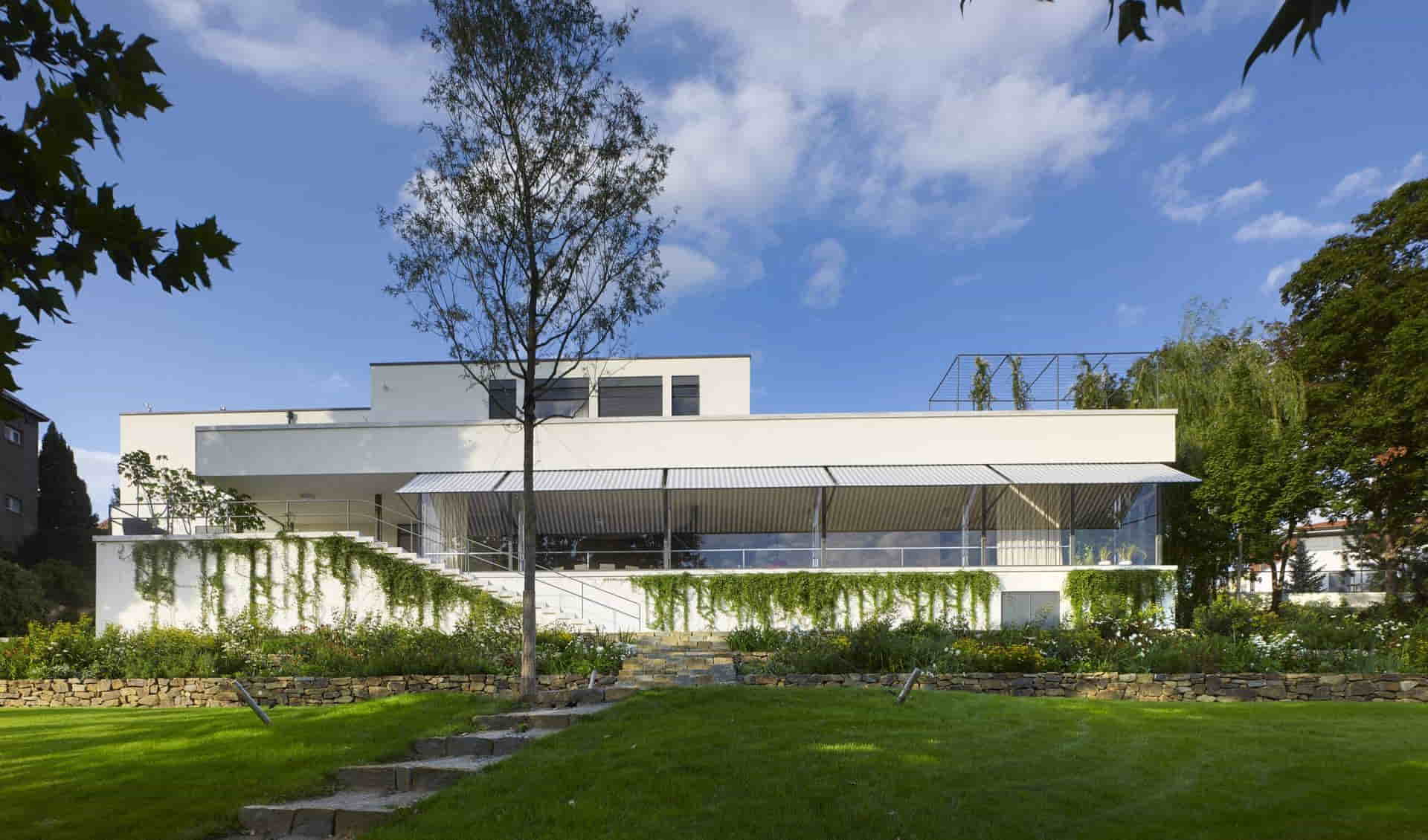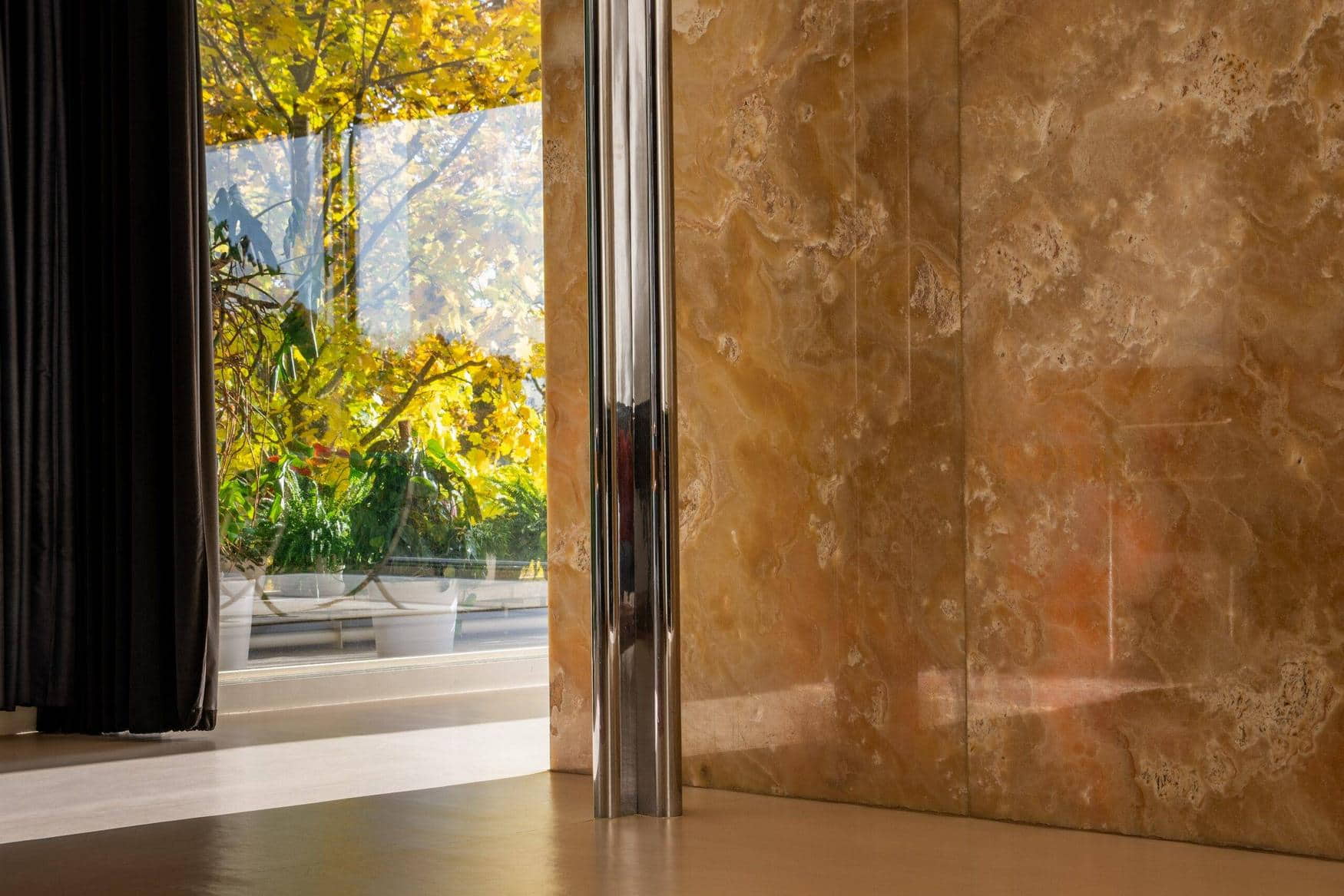Tucked away in the historic city of Brno, Czech Republic, stands Villa Tugendhat, an undisputed gem of modernist architecture. Families looking for an enriching cultural experience can walk through a home's heritage that has witnessed history, innovation, and artistic genius. Designed by the legendary Ludwig Mies van der Rohe, the villa is celebrated for its groundbreaking design, capturing the imagination of architecture enthusiasts and historians alike.
Villa Tugendhat represents a journey back to a transformative era of architecture, offering visitors a chance to explore the sleek lines and aesthetic clarity that defined the modern movement. With its spacious rooms and panoramic views of the city's sprawling gardens, children and adults can experience the fusion of functionalism and comfort, making it an educational and enjoyable family excursion. The villa's noble past as the residence of a prominent Czech family adds to its allure, offering a tangible link to the stories and lifestyles of the early 20th century.
Contents
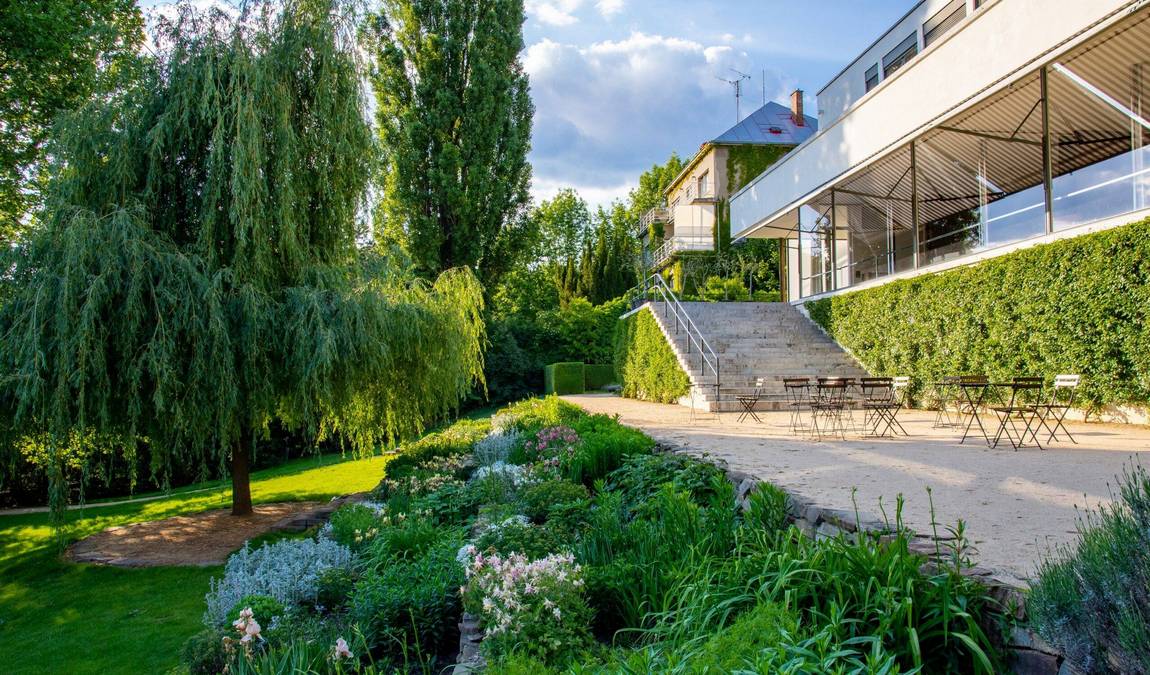 Photo: tugendhat.eu
Photo: tugendhat.eu
Stepping inside Tugendhat Villa in Brno reveals more than just the striking use of materials like onyx and rare woods; it opens up an opportunity for families to discuss the interplay between nature and human craftsmanship. The house's transparent facade and open-plan living space create a dialogue with the outdoors, ideal for sparking conversations with young minds about design and the environment. For these moments of discovery and learning, visit Villa Tugendhat, a must-do on any family's travel list while touring the Czech Republic.
Obora Holedna Nature Park, home to deer, is 2.1 km from the villa
What is Villa Tugendhat Known for?
Villa Tugendhat stands as a testament to architectural innovation and elegance. Designed by Ludwig Mies van der Rohe for Greta and Fritz Tugendhat, it is revered for its modernist design, harmonizing functionality with aesthetic appeal. UNESCO recognizes it for its outstanding universal value and contributions to the modern architectural movement.
This building is celebrated for its innovative use of materials, open-plan layout, and harmonious integration of indoor and outdoor spaces.
The Villa captivates families with its rich historical narrative and educational tours that enchant adults and children alike. It's not just a home; it's a piece of living history where one can step back and admire the bravura of early modern architecture.
Here is Why Your Kids Will Find it Interesting
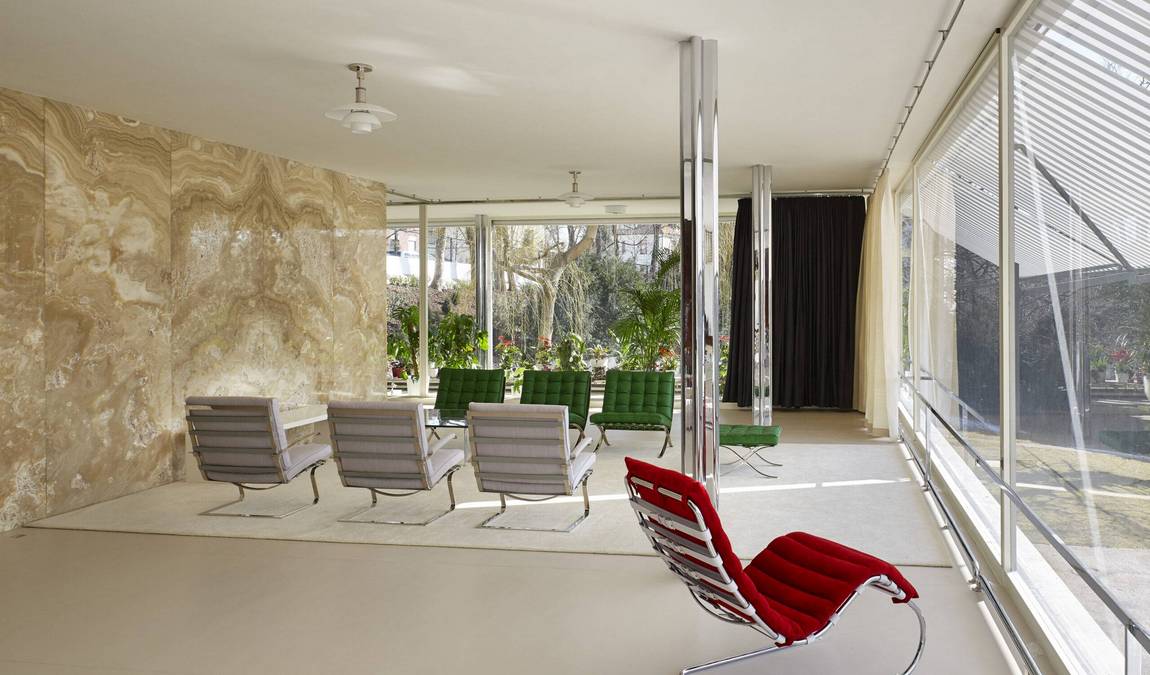 Photo: tugendhat.eu
Photo: tugendhat.eu
The Tugendhat House is a gem of modern architecture, offering families a unique cultural experience. It's not just a historical building; it's a place where children can engage with design, nature, and history, making it an intriguing visit for curious minds. Recommended for children aged 8 and up, the interactive aspects of the villa can trigger their curiosity about how people lived in the past and how design can be both functional and beautiful.
Top 3 Reasons to Visit Villa Tugendhat With Kids:
- Educational Value: The villa showcases modern 20th-century architecture, giving children a tangible history lesson on European cultural heritage.
- Design and Nature: With its unique combination of architecture and landscape, kids can see how the villa harmonizes with its surroundings, offering panoramic views of Brno.
- Iconic Furniture: They can witness iconic pieces of furniture design, such as the famed chaise longue and onyx wall, bringing to life past innovations.
Villa Tugendhat is worth visiting with kids because it brings a story that transcends generations to life. It's not simply a tour through a historic home but an exploration of ideas that shaped our modern world. While the history can be quite profound, the open space and sense of discovery are something even younger children can appreciate as they trek through the villa's grounds and interiors, allowing them to absorb the culture naturally and engagingly.
Historical Context
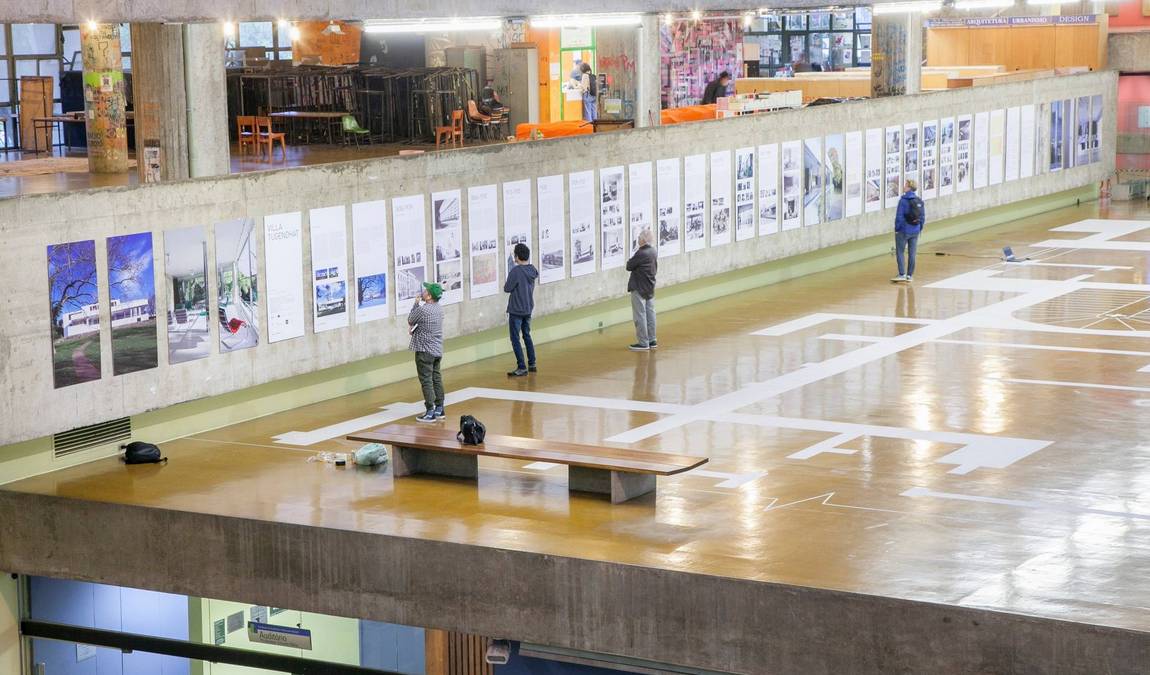 Photo: tugendhat.eu
Photo: tugendhat.eu
The story of Villa Tugendhat is intertwined with Europe's turbulent history, marked by its construction during the interwar period, occupation in World War II, and eventual recognition by UNESCO.
Villa Tugendhat rose as a symbol of modernist architecture in Brno, Czechoslovakia, designed by the eminent German architect Ludwig Mies van der Rohe. Visionaries Fritz and Greta Tugendhat, belonging to prominent Jewish families, commissioned the villa in 1928, intending to inhabit an avant-garde space that reflected their sophisticated taste and the progressive spirit of the times.
However, as the dark cloud of Nazi ideology spread across Europe, the Tugendhat family was forced to flee their home due to their Jewish heritage, preceding the horror of the Holocaust. During World War II, the Gestapo confiscated the villa and made modifications to its interior. In 1942, it was used as an office for Messerschmitt's airplane works. After the war, it served various functions, including a stint as quarters for the Red Army and later as a rehabilitation center.
After years of neglect and modifications, the villa underwent a significant reconstruction and restoration from 2010 to 2012, reopening to the public in March 2012.
Recognition as a World Heritage
In time, the significance of Villa Tugendhat transcended its architectural brilliance. This masterpiece, inscribed on the UNESCO World Heritage List in 2001, was acknowledged for its historical and cultural importance. This recognition not only celebrated the villa's aesthetic and historical value but also underscored the necessity to preserve the narratives it embodies.
Architecture and Design
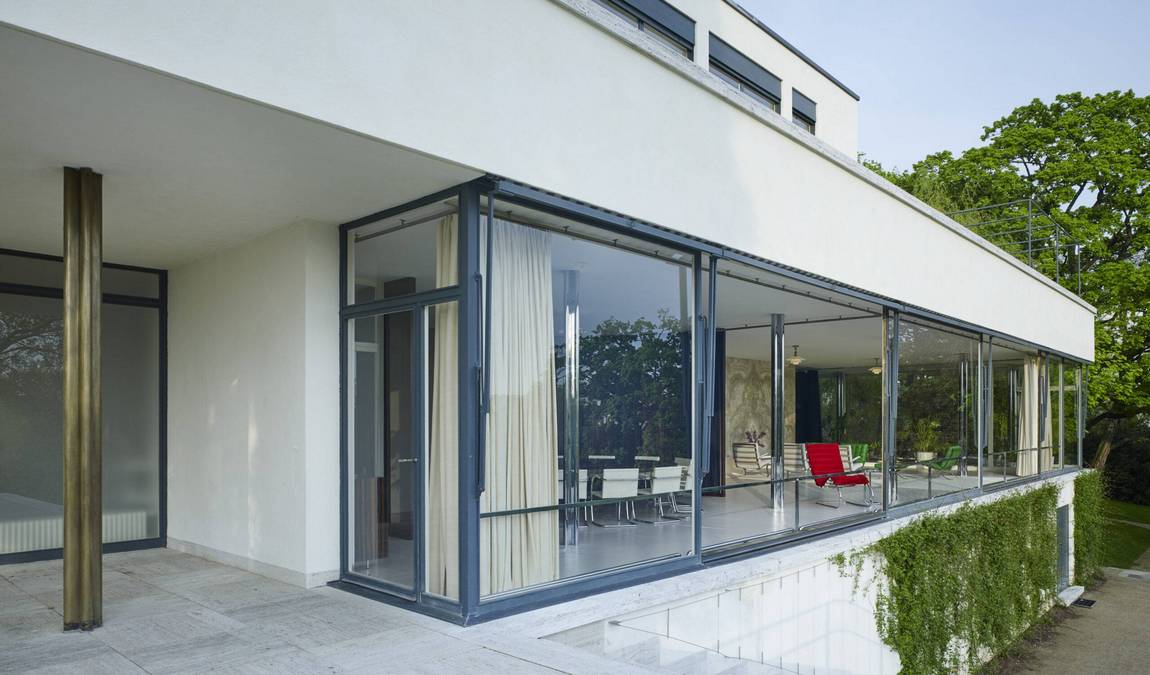 Photo: tugendhat.eu
Photo: tugendhat.eu
The Villa Tugendhat, designed by the architect Mies van der Rohe, is an iconic piece of modern architecture. It incorporates the principles of functionalism with a clean, unornamented style, resulting in architectural purity that resonates with families seeking an enriching cultural experience.
Ludwig Mies van der Rohe crafted Villa Tugendhat with the philosophy of functional architecture at its core. This modernist gem demonstrates a fusion of beauty and practicality — a hallmark of Modern Architecture. The villa reflects a minimalist aesthetic, echoing the principles seen in Mies van der Rohe's famed Barcelona Pavilion. Each design element serves a purpose, eliminating the superfluous and highlighting the importance of form concerning function.
Notable Features and Materials
Onyx Wall: A focal point of the house is the exotic onyx wall, which, under certain lighting conditions, transforms into a magnificent natural artwork.
Materials: The villa is a testament to the innovative use of industrial materials, featuring a structure of iron framework and large glass panels that break the boundary between interior and exterior spaces. Reinforced concrete is employed for its sturdiness, and stone for its natural elegance.
Terrace and Windows: Large windows and a spacious terrace create a seamless flow from the living space to the outdoors, welcoming families to gaze at the stunning Brno landscape.
These ingenious uses of form and material lend a sense of openness and fluidity to the Villa Tugendhat, making it a genuinely family-friendly space to discover and learn about the evolution of modern living.
Restoration Efforts
 Photo: tugendhat.eu
Photo: tugendhat.eu
Villa Tugendhat, a modernist masterpiece, has seen extensive restoration to preserve its architectural splendor for future generations. The home is a testament to the innovative vision of Ludwig Mies van der Rohe, and these efforts have focused on reviving the essence of its original 1930 appearance.
Reconstruction Challenges
Reconstruction of Villa Tugendhat posed significant challenges, as specialists aimed to retain the integrity of the original appearance. The process included detailed historical research to ensure fidelity to Mies van der Rohe's design. Using archival photographs and plans was critical in identifying and replicating materials and techniques used in the original construction.
Preservation and Maintenance
Preservation and maintenance are ongoing priorities for Villa Tugendhat. After the comprehensive renovation and restoration work, efforts have shifted to ensuring the longevity of the restored elements. It includes regular monitoring and careful handling of original features, such as the iconic onyx wall and the unique retracting windows, a marvel of early 20th-century design.
Cultural Impact
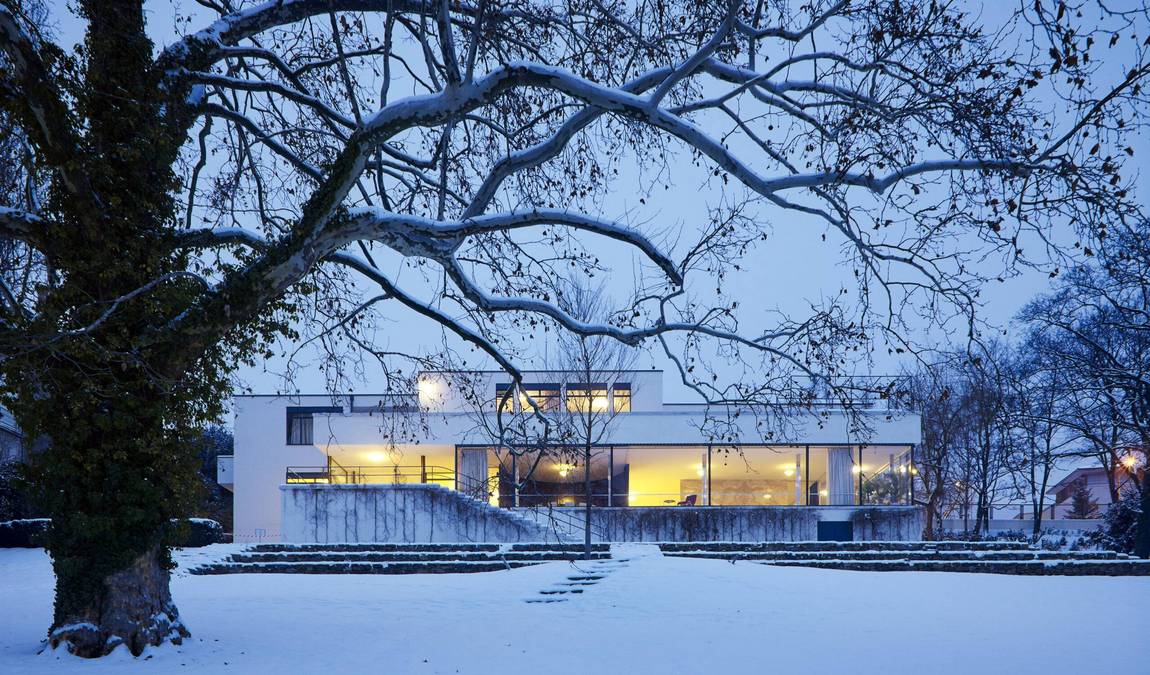 Photo: tugendhat.eu
Photo: tugendhat.eu
The cultural impact of the Villa Tugendhat extends far beyond its footprint in Brno, Czech Republic. It is a celebrated example of modern architecture and a source of inspiration in the arts and education.
Influence on Modern Architecture
Villa Tugendhat has earned accolades as a Monument of Modern Architecture, shaping the design and construction of private houses during the 20th century. As a critical piece of modernist heritage in the Czech Republic, the villa represents a profound shift towards simplicity, open space, and fluid functionality. It is a testament to innovation within its era. It continues influencing architects and designers who visit this living exhibition of avant-garde ideas.
Educational Role
Functioning as a museum open to the public, Villa Tugendhat plays an essential educational role. It hosts exhibitions that draw families with children into an immersive experience of progressive architecture. The villa illuminates aspects of 20th-century lifestyle and design philosophies through curated tours. Being listed as a UNESCO World Heritage Site, it also serves as a pedagogical tool, illustrating the importance of preservation and the value of cultural heritage.
Visiting the Villa
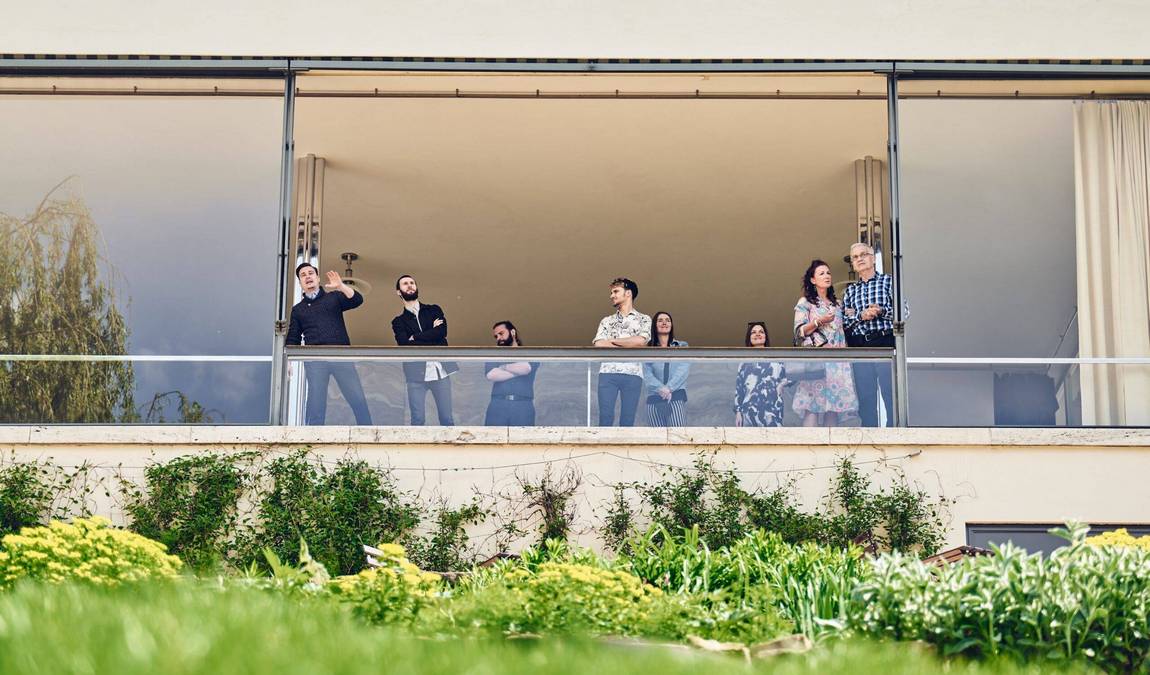 Photo: tugendhat.eu
Photo: tugendhat.eu
Embarking on a tour of Villa Tugendhat in Brno offers families an immersive experience of architectural history and grandeur. Tickets to the house should be secured in advance as it's a beloved landmark where visitors can stroll through residential history, appreciate progressive design, and enjoy peaceful gardens.
Extended Tour
The Extended Tour allows visitors to explore Villa Tugendhat's architectural wonder deeply. Conducted over 90 minutes, the guided tour delves into the villa's three floors, including private spaces such as the bedrooms and the main living area. Tickets are coveted for the chance to uncover the technical marvels of the villa, kitchen intricacies, and the fabled living room's minimalist splendor. The Extended Tour is recommended for families wishing to witness the careful blend of functionalism and domestic comfort.
Basic Tour
For those pressed for time or with younger children, the Basic Tour serves as an abridged yet enriching experience. Spanning approximately 60 minutes, this tour guides visitors through the most significant parts of the villa, focusing on the main living room and offering a narrative rich with historical and architectural insights. The Basic Tour includes access to the ground floor with the winter garden, emphasizing Mies van der Rohe's vision of harmonizing indoor and outdoor spaces.
The Villa from the Outside
Appreciating The Villa from the Outside is a must for every visitor. The structure's facade is an exhibition, with large terraces and vast windows that give a sneak peek into the modernistic design throughout the interiors. The villa's location in the affluent district of Černá Pole highlights its prominence amidst Brno's urban backdrop.
Garden and exposition
Open to the public without needing a guide, the Garden and Exposition can be a tranquil retreat and a playful discovery ground for families. Entry to the garden exhibition is free, offering spontaneous visits to the villa's serene outdoor area, perfect for a stroll or a family picnic. The garden honors the villa's aesthetic with its thoughtful arrangement. It is accessible except during adverse weather conditions, safeguarding this outdoor museum.
Villa Tugendhat Today
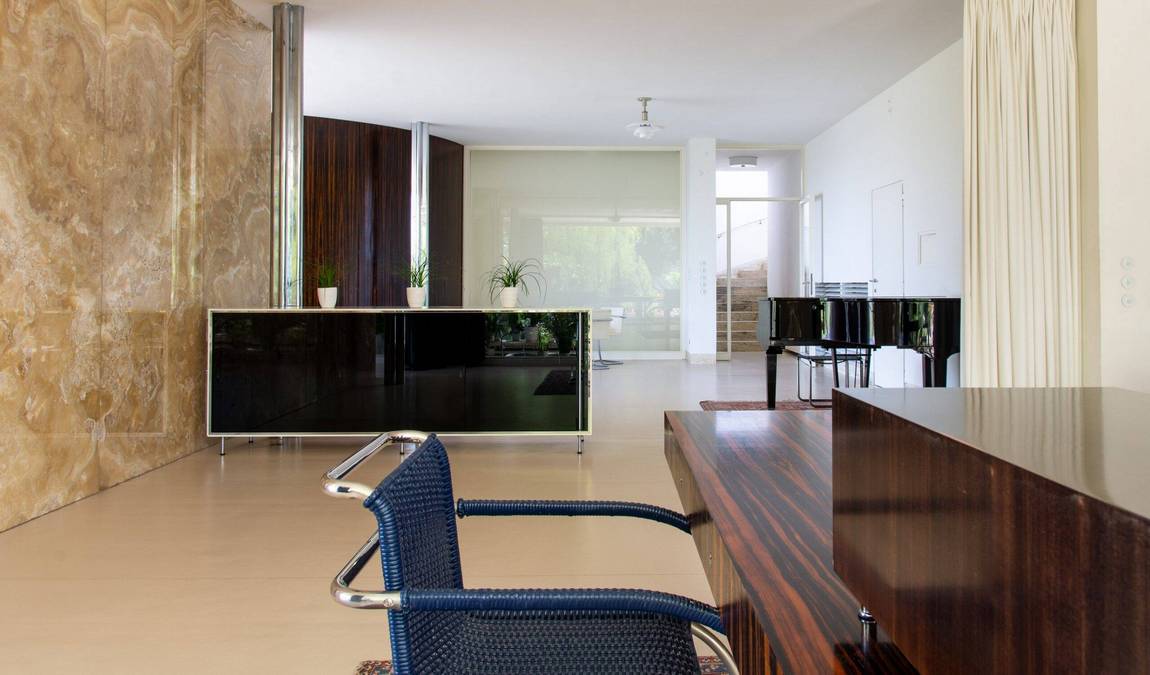 Photo: tugendhat.eu
Photo: tugendhat.eu
Villa Tugendhat stands proudly in Brno as a gem of modern architecture, showcasing its historical and design significance. Following extensive renovation works overseen by architect Kamil Fuchs, the villa reopened to the public, allowing families to step into a slice of architectural history.
Visitors today can marvel at the villa's original furnishings, designed by Ludwig Mies van der Rohe and Lilly Reich, which are elegant testaments to functional design. Among these pieces, the Brno Chair and the iconic Tugendhat Chair capture the essence of the interior design philosophy of the era. The furnishings are complemented by exhibitions that delve into the villa's past — telling stories through photos, plans, and personal documents.
Villa Tugendhat's interiors are a symphony of open spaces, exquisite materials, and interconnected rooms. The villa maintains its technical facilities with a sense of timelessness; the central heating and air conditioning systems reflect the era's cutting-edge technology and continue to ensure a comfortable visit regardless of the season.
Lilly Reich’s contribution is prominently featured for the design-enthusiast parents. Her influence on the modern movement is embodied in every detail of the home. What's more inviting for families is the home's tactile and visual allure, which can be a captivating educational experience for children exploring the confluence of function and elegance.
For the most complete experience, it is recommended to relish in the guided tours, illuminating the historic site's visible and hidden treasures.
Best Time to Visit
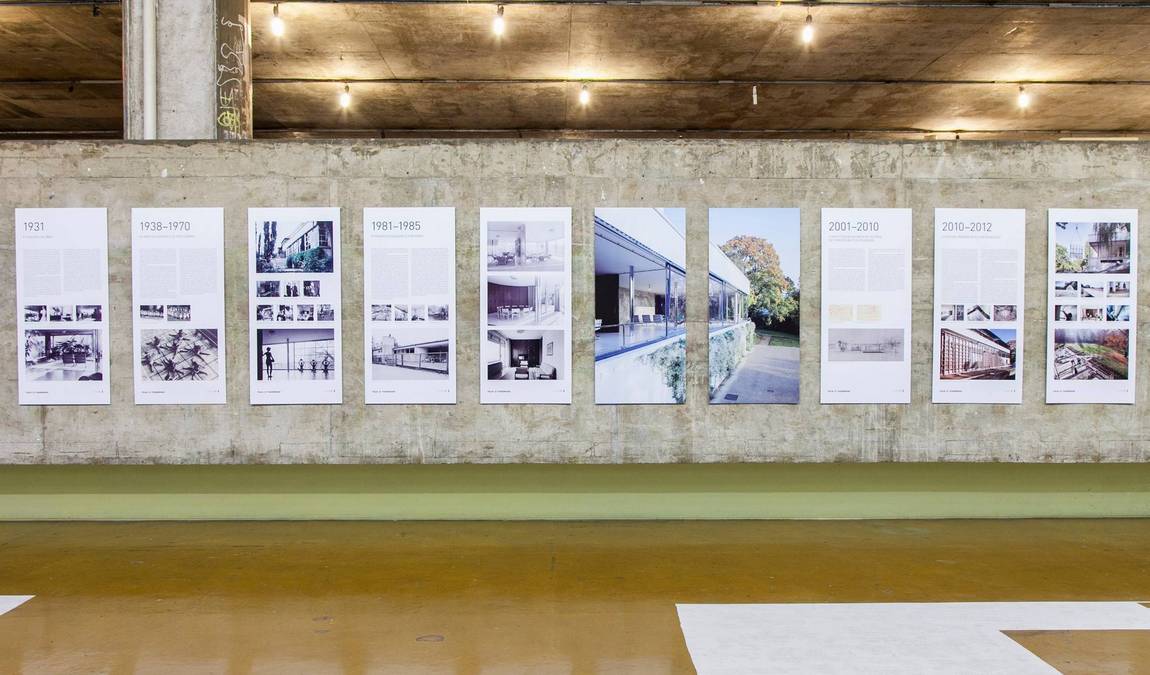 Photo: tugendhat.eu
Photo: tugendhat.eu
The Tugendhat House in Brno is an architectural marvel that families should consider for an enriching cultural experience. With a need to plan, those with children are advised to target their visit during the warmer months from April to October. This period offers pleasant weather conducive to exploring the villa's gardens.
Visiting Hours:
- Tuesday to Sunday: 10:00 AM - 6:00 PM
To capture the essence of the villa without the crowds, it's recommended that families visit on a weekday morning soon after opening. Weekends can be busier, and the tranquil atmosphere of the mornings allows for a more personal experience as you traverse the iconic modernist space.
For those wishing to fully appreciate the intricate details and historical significance, a 90-minute guided tour is available. These tours are particularly beneficial as they provide insightful narratives tailored to all ages, ensuring that each family member leaves with a profound appreciation for the villa's design and history.
Guided Tour Slots:
- 10:10 AM, 12:00 PM, 2:00 PM, 4:00 PM
Given the villa's popularity and the limited availability of tour spaces, pre-booking at least two months in advance is highly recommended, especially when planning a visit with children for a stress-free experience.
How Long Does It Take to Attend?
 Photo: tugendhat.eu
Photo: tugendhat.eu
Visitors to the remarkable Villa Tugendhat should allocate sufficient time to appreciate this architectural gem fully. The modernist landmark requires approximately 90 minutes for a comprehensive guided tour. Here’s a breakdown:
- Tour Duration: Typically lasting 1.5 hours, the tour provides an in-depth look at the villa's history and design.
- Ticket Information: Due to limited capacity, it's prudent to pre-book tickets, which are often sold out weeks in advance. Therefore, families should plan to secure their spot early.
For families with children, this time investment is perfect for sparking curiosity without taxing the little ones’ attention spans. It balances an enlightening cultural experience and a chance for families to engage with a piece of 20th-century history in an approachable timeframe.
Given the exclusivity of the tours and the prestigious status of the villa within the international architectural community, factoring in this visit to your itinerary adds not just a slice of cultural enrichment but a structured, family-friendly activity that is both educational and enjoyable.
Tickets for individuals can be arranged in advance, and it's a good idea to check the official villa website for the latest details on tour availability and ticket prices. Remember, planning is critical to ensuring a stress-free visit to this iconic site.
Is Villa Tugendhat Worth Visiting?
Designed by the celebrated architect Mies van der Rohe, Villa Tugendhat emerges as a symbol of modernist architecture tucked away in Brno. For families with curious children, the educational aspect of this UNESCO World Heritage site is undeniable; it provides an interactive glimpse into the progressive designs that predated even the mid-20th century.
Constructed in the 1930s, Villa Tugendhat is an exemplar of the International Style. Its clear structural elements and open space concept are fascinating exploration topics for adults and kids alike. The home is an architectural marvel and a history repository, each room telling a story.
- Educational Value: Kids can learn about history and architecture in an engaging setting.
- Cultural Significance: Understanding the impact of early modern architecture.
- Engaging Tours: Specific tours can hold the attention of all age groups.
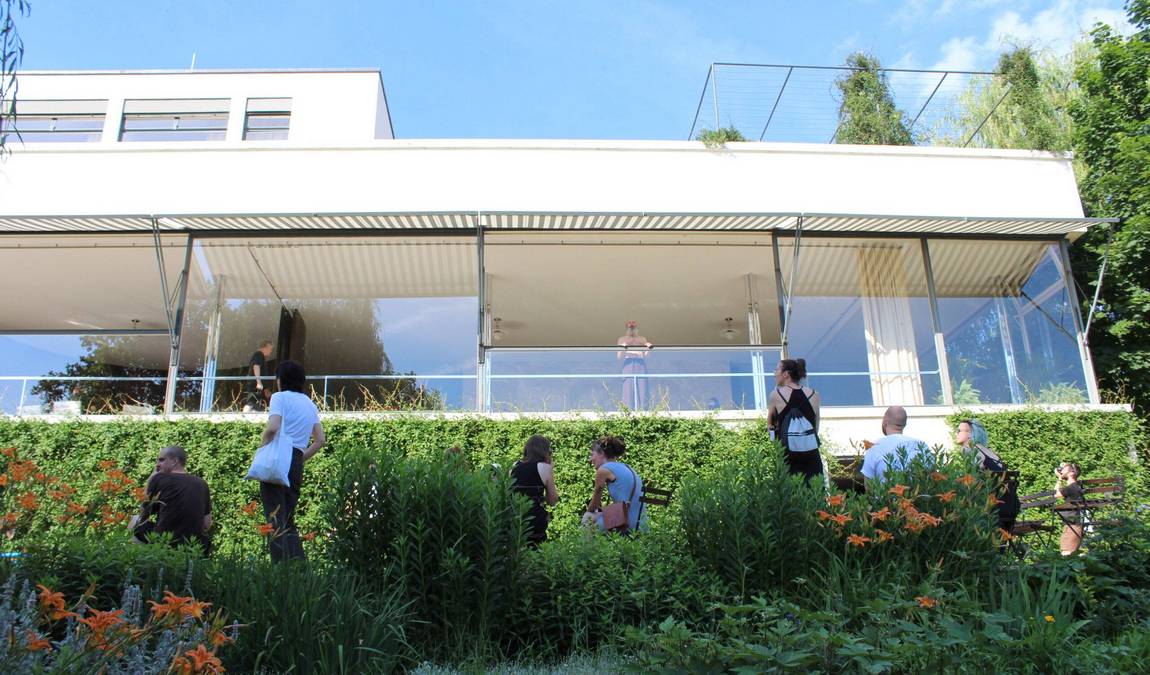 Photo: tugendhat.eu
Photo: tugendhat.eu
Access to Villa Tugendhat's garden offers a serene setting for family relaxation and reflection. The careful preservation efforts allow visitors to step back in time and appreciate the innovation the villa represents.
Villa Tugendhat is worth visiting for its architectural rarity, historical significance, educational merit, and unique experience for families embarking on a cultural exploration.
At the heart of a visit to Villa Tugendhat is the appreciation of craftsmanship and an educational journey through the evolution of modern architecture.
Therefore, when considering destinations that cater to a family-friendly and educational outing, Villa Tugendhat comfortably checks all the boxes. It is an essential stop in Brno for families seeking to enlighten their kids and themselves with architectural innovations that have shaped the modern world.
In conclusion, Villa Tugendhat stands out as a noteworthy educational experience. It offers an exceptional opportunity for families to dive into the realms of architecture and history presented in an approachable format for children. With tailored tours, families can have an engaging visit that stimulates curiosity and fosters family discussions. Encouraging readers to seize the chance for an enriching family excursion, Villa Tugendhat awaits as a portal to the past and a lesson in timeless design.


